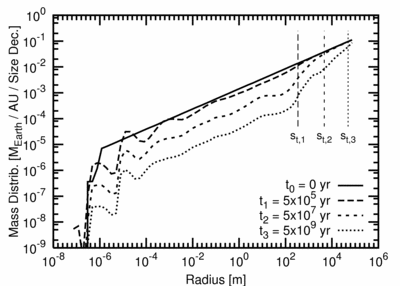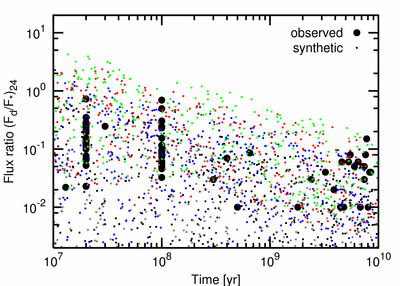The long-term evolution of a debris disc is shown to be dominated by the slow transition of the population of planetesimals from the size distribution set at their growth phase to the steady-state size distribution defined by disruptive collisions. This transition is crucial for the temporal evolution of the observable dust masses and luminosities and for the deduced total disc masses. The developed models are compatible with observational statistics from the Spitzer Space Telescope surveys.
From numerics and analytics, scaling laws are derived for the dependence of the collisional timescales on the disc mass, the radial distance to the star, and the planetesimals' orbital eccentricities (Löhne et al., ApJ 673 (2008)).

The long-term evolution of a debris disc is shown to be dominated by the slow transition of the population of planetesimals from the size distribution set at their growth phase to the steady-state size distribution defined by disruptive collisions. This transition is crucial for the temporal evolution of the observable dust masses and luminosities and for the deduced total disc masses.

The developed models are compatible with observational statistics from the Spitzer Space Telescope surveys.
